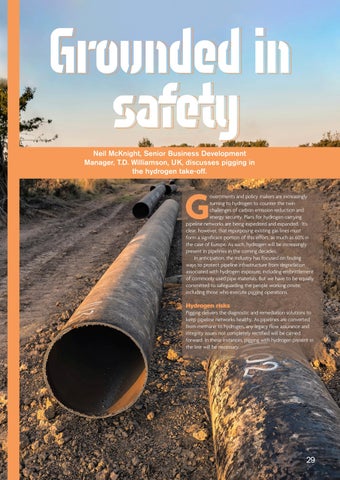Neil McKnight, Senior Business Development Manager, T.D. Williamson, UK, discusses pigging in the hydrogen take-off.
G
overnments and policy makers are increasingly turning to hydrogen to counter the twin challenges of carbon emission reduction and energy security. Plans for hydrogen-carrying pipeline networks are being expedited and expanded. It’s clear, however, that repurposing existing gas lines must form a significant portion of this effort, as much as 60% in the case of Europe. As such, hydrogen will be increasingly present in pipelines in the coming decades. In anticipation, the industry has focused on finding ways to protect pipeline infrastructure from degradation associated with hydrogen exposure, including embrittlement of commonly used pipe materials. But we have to be equally committed to safeguarding the people working onsite, including those who execute pigging operations.
Hydrogen risks Pigging delivers the diagnostic and remediation solutions to keep pipeline networks healthy. As pipelines are converted from methane to hydrogen, any legacy flow assurance and integrity issues not completely rectified will be carried forward. In these instances, pigging with hydrogen present in the line will be necessary.
29











